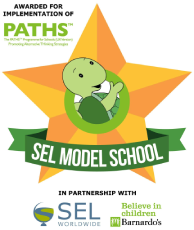- Home
- Classes
- All About Lyme
- Our School
- Vision and Values
- Prospectus
- Staff
- Breakfast and After School Club
- Corporate Social Responsibility
- Online Safety
- Pastoral Support
- Rights Respecting School
- School Holiday Dates 2024-25
- School Holiday Dates 2025-26
- School Meals
- School Opening Times
- SEN and Adaptive Teaching at Lyme
- Uniform
- Wrap Around Care at Lyme
- Young Carers
- Activities
- Extra Curricular Activities
- Academic Enrichment
- Forest School
- Easter Journey for Y5
- Send My Friend to School Campaign
- World Book Day 2019
- Lyme's Anti-Bullying Video
- Staying Safe Online!
- Extreme Reading
- HEALTH AND WELL-BEING WEEK 2019
- SPORTS DAY 2019
- ARTS WEEK 2019
- SCIENCE CLUB 2019
- SCIENCE WEEK 2019
- Learning Challenge Curriculum Exhibition
- Sports Relief 2018
- Social Enrichment
- Residentials and Trips
- School Money
- School Spider Parent App Guide
- Governors
- Curriculum
- British Values
- Curriculum
- Early Years Curriculum
- Maths
- Overviews for Parents Autumn 1 2024
- Overviews for Parents Autumn 2 2024
- Overviews for Parents Spring 1 2025
- Overviews for Parents Spring 2 2025
- Overviews for Parents Summer 1 2025
- PATHS
- Personal Development
- Phonics
- Reading
- Subjects
- Writing
- English and Maths End of Year Expectations
- Assessment
- Statutory Assessments 2024/25
- Protected Characteristics
- Newsletters
- Parent Voice
- Pupil Leadership
- Safeguarding
- Statutory Information
- Pupil Voice
- Contact
Child on Child Abuse
Unfortunately, child-on-child abuse can and does happen in a whole range of settings that children attend. However, it often goes unseen. It might take place online, for example, or away from the school or setting. Therefore, training for professionals to help them recognise the signs, and know what to do, is essential.
For schools, there’s detailed Department for Education advice on what to do if a child is sexually harassed or experiences sexual violence. This expands on the principles set out in the statutory guidance ‘Keeping children safe in education’.
We expect all our staff to be familiar with this guidance and to apply it. Staff should understand child protection policies and use them: there’s no point to a policy that is not put into action. It should be clear that child-on-child abuse will never be accepted or dismissed as ‘children being children’.
We expect all staff to know what to do if they come across, or are worried about, child-on-child abuse. They should know who to speak to and what action to take to make sure children are safe.
Understanding child-on-child abuse
Peer-on-peer abuse is most likely to include, but may not be limited to:
Bullying (including cyberbullying, prejudice-based and discriminatory bullying)
Physical abuse such as hitting, kicking, shaking, biting, hair pulling or otherwise causing physical harm (this may include an online element, which facilitates, threatens and/or encourages physical abuse)
Emotional abuse - online or offline
Abuse in intimate relationships between peers
Sexual violence and sexual harassment
Causing someone to engage in sexual activity without consent
Upskirting, which typically involves taking a picture under a person’s clothing without their permission, to obtain sexual gratification or cause the victim humiliation, distress or alarm
Consensual and non-consensual sharing of nude and semi-nude images and/or videos (also known as sexting or youth produced sexual imagery)
Initiation/hazing type violence and rituals, which could include activities involving harassment, abuse or humiliation used as a way of initiating a person into a group, and may also include an online element.
Child-on-Child sexual abuse
This can take many forms, such as:
Abuse in intimate personal relationships between peers
Upskirting, which involves taking a picture under a person’s clothing without their permission to obtain sexual gratification or cause the victim humiliation, distress or alarm
Sexting, which covers both consensual and non-consensual sharing of nude and semi-nude images and/or videos
Causing someone to engage in sexual activity without consent, such as forcing them to strip, touch themselves sexually or engage in sexual activity with a third party
Sexual violence
This means rape, assault by penetration, or sexual assault (intentional sexual touching).
Sexual harassment
This means unwanted conduct of a sexual nature – such as sexual comments, sexual jokes or taunting, physical behaviour like interfering with clothes, or online harassment such as sexting.
Appropriate training and regular updates for the staff at Lyme Community Primary School
All our staff maintain an attitude of ‘it could happen here’. They address inappropriate behaviour’s as soon as they happen, helping to prevent abusive/violent behaviour further down the line. Victims will be listened to and reports will be taken seriously. It’s vital our staff know and can identify peer-on-peer abuse early to prevent it from escalating. We provide staff with regularly updated and appropriate safeguarding training that enables them to understand:
Their role in preventing peer-on-peer abuse
How to identify the indicators of abuse
What to do if they have a concern about a child
How to respond to a report of abuse
How to offer support to the victim(s) and alleged perpetrator(s)
Where to go if they need support
That children can abuse other children inside and outside of school, as well as online, and that online abuse can take the form of:
Abusive, harassing and misogynistic messages
Non-consensual sharing of indecent nude and semi-nude images and/or videos, especially around chat groups
Sharing of abusive images and pornography to those who don’t want to receive such content
That they need to maintain an attitude of ‘it could happen here’
That even if there are no reports in your school, it doesn’t mean it’s not happening
The importance of challenging inappropriate and abusive behaviour (see more on this below)
That girls are more likely to be victims and boys are more likely to be perpetrators
Reporting abuse
If we are dealing with an allegation of peer-on-peer abuse, we follow our Safeguarding school policy and report incidents internally using CPOMS.
Some of our safeguarding partners are:
St Helen's Children’s Social Care
Early Help Team
Police Community Support Liaison Officer (PCSO)
Nurture Support
Curriculum
Our curriculum ensures that children are taught about safeguarding, including how to stay safe online.
Our PSHRE curriculum tackles (in an age-appropriate and inclusive way) issues such as:
Healthy and respectful relationships
What respectful behaviour looks like
Consent
Gender roles, stereotyping and equality
Body confidence and self-esteem
Prejudiced behaviour
Sexual violence and sexual harassment
Cyber-bullying
Sexting
Peer pressure
Self-esteem
The National Society for the Prevention of Cruelty to Children (NSPCC) has a range of safeguarding teaching resources including lesson plans on personal safety, healthy relationships and online bullying. Its 'Speak out Stay safe' programme also includes interactive assemblies and workshops on safeguarding for pupils in KS1 and KS2.
How we support our pupils to feel confident to report abuse?
We have robust systems in place for pupils to confidently report abuse, sexual violence and sexual harassment. Worry boxes are available for children to express their concerns and child friendly posters are in prominent places to remind children who they can talk to. As a GOLD Rights-Respecting School, our learning around children's rights and our Class Charters support our children to know about :
Article 12 - The right to give your opinion and for adults to listen and take it seriously.
Article 16 - The right to privacy
Our children know that we treat their concerns seriously and that they can safely express their views and give feedback. Our Safeguarding Team have a highly visible and active presence within the school. They will make children aware of the processes of how any report can be reported and consequently handled, including when they have a concern about a friend or a peer.
Other organisations/ agencies we may work with
Child-on-Child abuse incidents and/or inappropriate behaviours can be associated with factors outside of the school. We consider the context when preventing and dealing with such incidents.
For example, when tackling violence it's important to we:
Understand the problems that young people are facing both in school and in their local community
Consider possible avenues of support
Work with local partners (who may have valuable information, resources or expertise).
Specialist organisations to support training staff, teaching children and/or providing them with support, such as NSPCC and the Brook traffic light tool.
Further information and support can be found at: https://www.nspcc.org.uk/what-is-child-abuse/
Lyme Community Primary, Lyme St, Newton-le-Willows WA12 9HD











